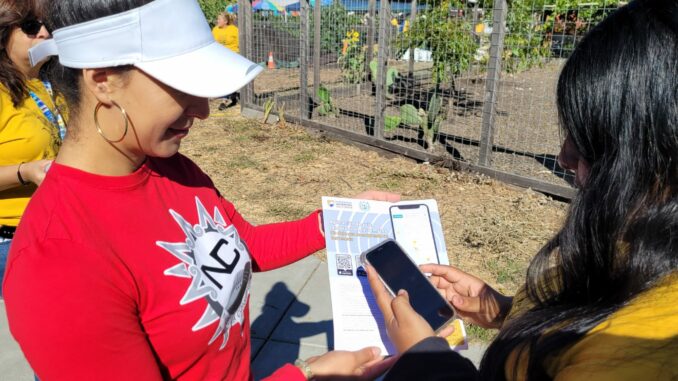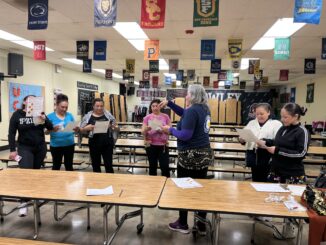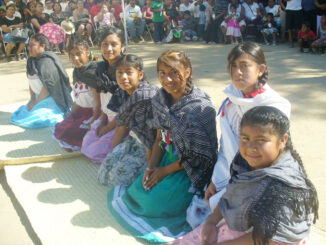
Veteran 911 dispatcher helms organization that helps the most vulnerable in times of emergency
by M.S. Enkoji
During her nearly two decades of dispatching 911 calls in Sonoma County, Alma Bowen saw one thing clearly: certain populations faced greater challenges during emergencies and disasters.
“I could identify chronic disadvantages in the community,” she says.
She left her dispatch job in 2018 to launch Nuestra Comunidad with her husband to provide a link between those populations and disaster preparedness. Since then, the Sonoma County non-profit has educated thousands every year. Though not exclusively directed at Latinos—who make up 30 percent of the county’s population according to the 2024 U.S. Census estimate—Nuestra Comunidad does respond to specific obstacles for that population, such as farmworkers who might distrust 911.
“When they see we speak Spanish, they’re more comfortable,” says Carmen Lara, community engagement and outreach lead for Nuestra Comunidad. “We just want to prepare you; we don’t want to make you more afraid.” Lara, who is married to a farm worker, will go out to vineyards to give information about where to find shelter, food and assistance during a disaster.
Sonoma County is susceptible to wildfires, and also sits on several fault lines—including the San Andreas Fault—which increases the possibility of earthquakes. Some of the more populated areas in the county are on “liquified” ground, meaning it loses strength more easily during an earthquake. Reminding residents to Drop, Cover, and Hold On during an earthquake is key to keeping the north bay community safe.
During tabling events, Nuestra Comunidad distributes ready guides in multiple languages. Disaster workshops at the organization’s headquarters in Windsor offer life-saving information to churches, work places, book clubs—any organization willing to participate. The group trained 80 local high school students, who in turn taught 800 others.
Nuestra Comunidad will go to low-income housing complexes for workshops, and even to farmworkers in the field. “We’re giving them the best chance of surviving and recovering,” says Bowen.
Besides understanding the role of 911, participants learn that an emergency—such as a building collapse—involves local first responders, but a disaster involves widespread damage that could leave people on their own for initial help. They learn what evacuation zone they are in, how to use resource hotline 211, and the importance of planning for their families.
Participants who finish the hour-long presentation get a go-bag. The bags, approved by the Federal Emergency Management Agency, contain three days of food and water and a whistle. Farm workers, who could get trapped outdoors, will at least have those necessities, says Bowen.
What started as a disaster preparedness resource is branching out, Bowen says. With five employees, Nuestra Comunidad has expanded to offer information about physical and mental health resources, an effort Bowen notes is related to disaster response: “Resilience is important,” she says.
Bowen believes her 20 years spent answering 911 calls for the county strengthens her relationship with first responders. “I just think we’re in a unique position to do this work,” she says.
For more information about Nuestra Comunidad, visit www.nc707.org.
Drop, Cover and Hold On
- Identify movable hazards like mirrors, bookshelves, water heaters and refrigerators
- Secure them with straps, hooks or latches
- Keep heavy or large items away from escape routes, beds and couches
- Drop where you are to your hands and knees
- Cover your head and neck and crawl to a protected space or interior wall
- If outside, stay in open spaces and away from buildings, power lines and trees
- Hold on until the shaking stops
For more information on how to prepare for and stay safe during and after earthquakes and other emergencies, visit www.listoscalifornia.org.




